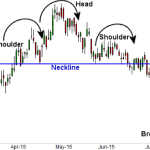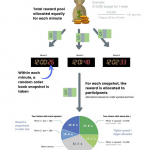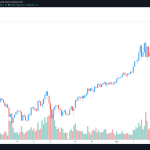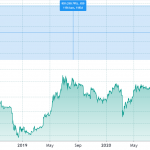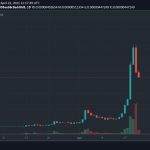If you look at the DeFi ecosystem through a wider lens, you can see that decentralized finance projects are working and developing in roughly twelve directions. Attempting to shift to a decentralized form of almost everything related to the traditional financial system also means trying to move as quickly as possible to new types of interactions with financial instruments and decentralization of these interactions.
In today’s article, we will talk about the sphere of lending enforced by blockchain technology, smart contracts, and stablecoins. Decentralized financial markets allow building p2p transactions between borrowers and lenders, where a smart contract acts as an intermediary. This is one of the fastest-growing and popular areas of decentralized finance at the moment.
Decentralized lending and borrowing of crypto assets
Protocols and platforms in the field of lending and borrowing of crypto assets offer different options for its users. At the same time, the decentralized applications appeal is that the participants keep full control of their private keys and are not required to trust any central authority.
Holders can generate passive income through interest rates from borrowers. Applications and protocols in the DeFi ecosystem allow any user to access financial instruments that are not available in the traditional financial market. Users can get interest from their assets by granting loans, and borrowers can get a loan at lower interest rates.
In the lending field, a striking example of the use of decentralized lending platforms is margin trading, such as trading in a short position or using leverage to trade. In general, decentralized lending platforms rely on excess collateral from borrowers to initiate the loan, as well as the rules to decide on closing the loan.

At the time of writing, the total amount of blocked funds on lending- and borrowing-related platforms has almost reached $5 billion, 45% of which are blocked on the most popular lending platform MakerDAO.
MakerDAO
The leader in the number of blocked funds, amounting to $2.2 billion, is a decentralized lending platform Maker. The platform consists of smart contracts based on Ethereum, operating through a decentralized autonomous organization (DAO) and backed by the assets of a decentralized DAI stablecoin on the Ethereum blockchain. The development of MakerDAO marked the beginning of the Ethereum-based decentralized financial system.

In addition to DAI, the system operates Maker (MKR) utility token, which is used while voting, paying fees for the smart contracts use, as well as while managing the platform.
Maker allows any user to take a DAI-nominated credit, secured through smart contracts by other assets such as ETH. With the release of a multi-tax version of Dai (MCD) in 2019, it became possible to provide collateral for several types of assets, such as ETH, BAT, WBTC, and USDC, with a single asset (SAI). The Oasis Borrow interface was also launched to store collateral, and Oasis Save was introduced to lock DAI stablecoins with interest.
Compound
Compound was founded and based in Ethereum in 2018 as an algorithmic protocol that provides access to the markets for cryptocurrency loans, where the ratio of supply and demand forms prices and interest rates. The peculiarity of the protocol is that it uses a pool of liquidity, in which funds are offered for borrowing. Smart contracts compare borrowers with available assets and distribute interest accordingly.
The protocol assumes that there are no time limits, which means that funds deposited via the protocol can be repaid at any time. In order to obtain credit opportunities, it is necessary to block funds in the protocol, receiving cTokens in return.

In April 2020, the management of Compound was distributed between the COMP token holders. The protocol supports such assets as BAT, DAI, SAI, ETH, REP, USDC, WBTC, ZRX, and more. At the time of writing, more than $1.3 billion is locked in the protocol, and it is the second-largest project on the list.
Aave
The third by the amount of blocked funds is a decentralized lending protocol – Aave. Aave, like most other credit protocols, uses a liquidity pool that provides assets to borrow at interest. Withdrawals are available at any time, with each pool reserving a certain amount of funds to hedge risks.

Aave has about 20 assets available for lending and borrowing: LINK, USDC, USDT, ETH, DAI, SNX, WBTC, KNC, BAT, and others. The operating principles of Aave are similar to the Compound protocol. Aave positions itself in providing a wider range of tools and opportunities, such as the introduction of term loans without collateral, fixed and floating interest rates, and the creation of credit lines, to be used as a p2p-credit.
BlockFi
Touching upon the topic of loans and cryptocurrencies, it is worth mentioning the capital management platform BlockFi, which allows you to borrow and lend using crypto assets as collateral. The company has attracted over $60 million from ConsenSys Ventures, Kenetic Capital, SoFi, Galaxy Digital, and Fidelity.
The platform offers such collateral options as BTC, ETH, LTC, and GUSD. BlockFi allows users to earn complex interest on deposits, providing cryptocurrencies as collateral. Credits on the platform are available at an interest rate of about 4.5% per annum. And it is mandatory to provide personal information in order to get a loan.

BlockFi is obviously not a decentralized project, but it provides an opportunity for institutional investors and publicly traded companies to invest their crypto assets safely and securely.
dYdX
dYdX is a decentralized protocol that supports financial derivatives, perpetual contracts, and margin trading of assets like ETH, DAI, and USDC.

Lending, leasing, and trading functions are available on the platform. With dYdX, users deposit a collateral amount into the order book to execute an off-chain order, which ensures that only the deposit or withdrawal of assets is paid for. An additional feature of the platform is that any assets deposited to the platform automatically accumulate interest. Despite the fact that the project is quite young, more than $35 million has already been blocked on the platform. The opportunities provided by the platform attract more and more traders to the platform, making the project popular.
Conclusion
Decentralized protocols can offer financial instruments similar to traditional ones with such advantages as transparency, speed, simplicity, decentralization, trustlessness.
And although non-custodial protocols and applications have advantages in comparison with centralized services, they have their downsides. The main problems faced by the market of decentralized finance are low liquidity, poor security, and scalability. But do not forget that DeFi is only at the stage of emergence and expansion of its borders. Decentralized finance, and in particular decentralized lending, allows users to retain full control over their assets and provides access to all markets and platforms in the ecosystem.


